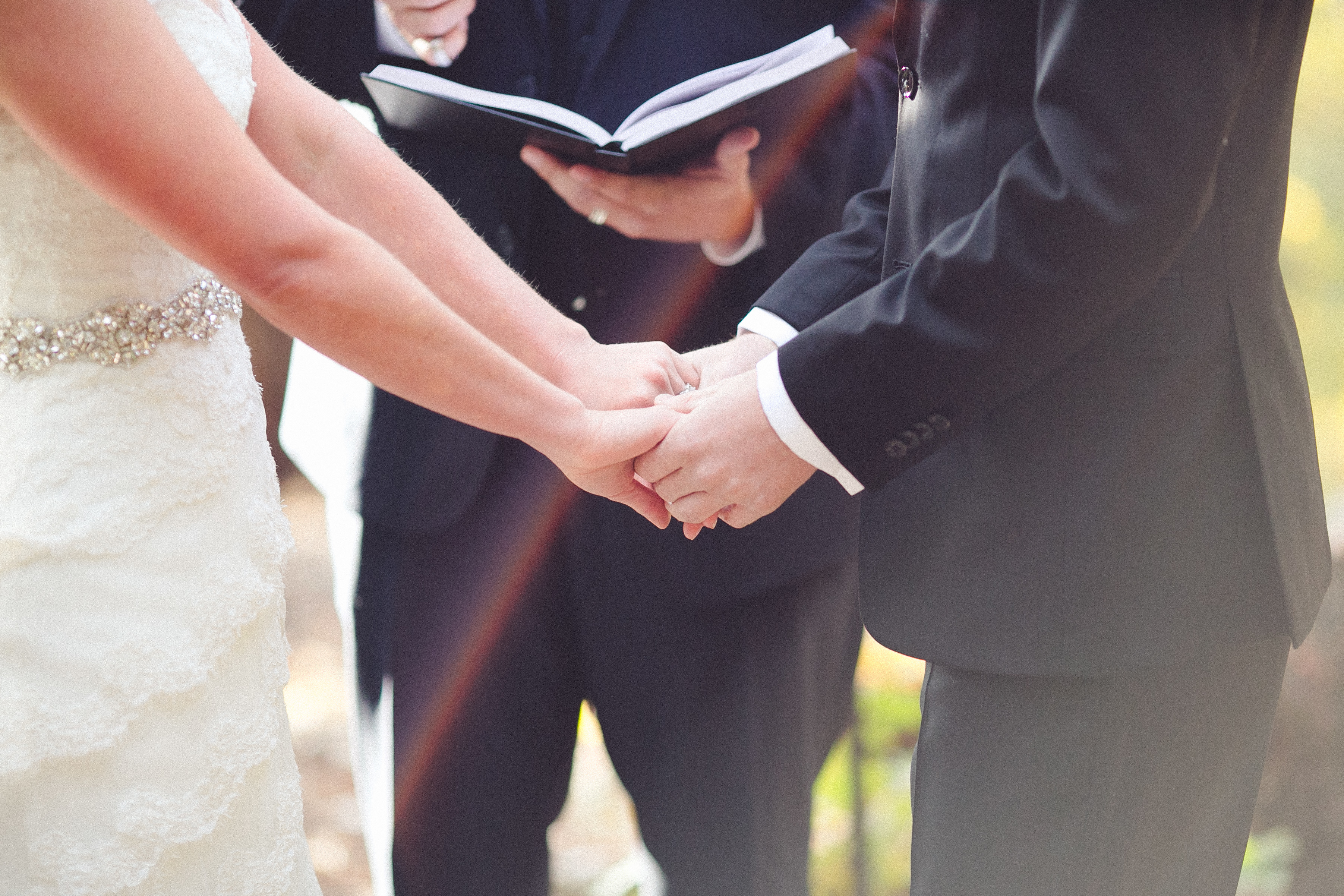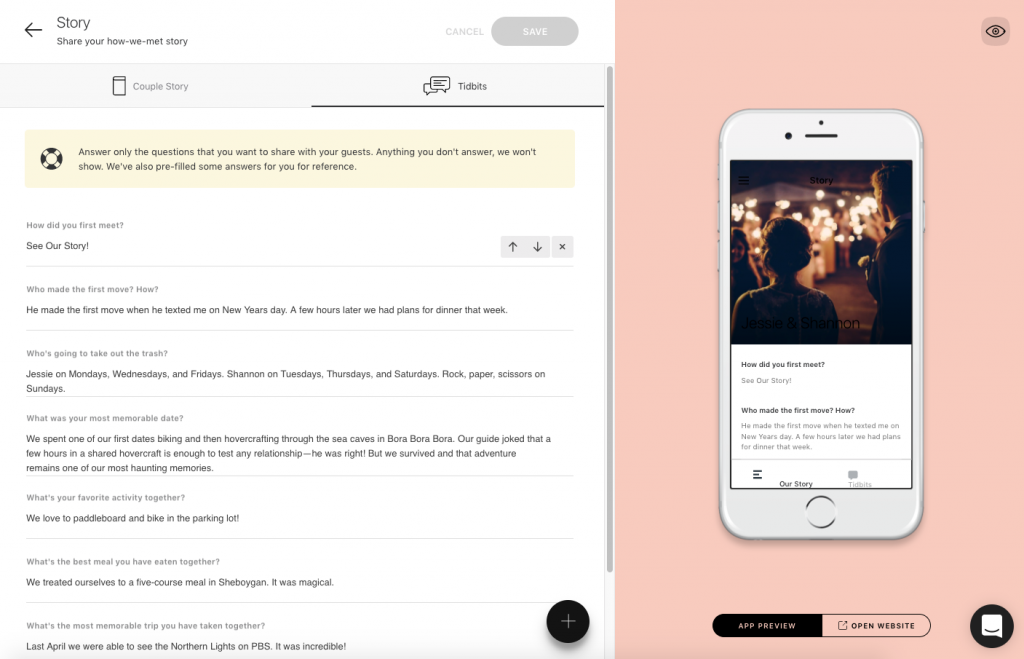Last Updated on August 18, 2020 by Joy Editors
Amid all the other important stuff like hiring a caterer, finding the right dress, and figuring out the decor, the actual details of the main event—your wedding ceremony—can sometimes get overlooked. If you’re having a traditional religious ceremony, this makes a certain amount of sense. The majority of the ceremony is already provided for by tradition and the decisions of your officiant. If you’re coming up with your own non-denominational or secular ceremony, however, decisions about what to include will ultimately be yours. If you’re writing your own ceremony, it can be hard to know where to start. Choosing which elements of a wedding ceremony you want requires some careful consideration. Even if you’re going with a traditional ceremony, you may be able to add your own touch by picking songs and readings. To get you started, here are tips to help you plan for any type of wedding ceremony.
Planning for a traditional wedding ceremony
A traditional religious ceremony comes with its own script. The rituals and the words said in the ceremony will be determined in large part by the religious tradition you’re taking part in. You can, however, talk to the clergy member who will be officiating your wedding about the details. He or she can point out to you where you can add, remove, or personalize elements of the ceremony. In many traditions you will have the opportunity to choose readings and music to go with the usual rituals. This is your chance to personalize your ceremony, so think carefully about the readings and hymns you choose!
Creating your own ceremony
When you start out writing your own wedding ceremony, the possibilities are endless. This can be both exciting and overwhelming. The thing is, you don’t have to create everything from scratch. You’ll probably want your ceremony to be at least somewhat familiar as a wedding to your guests, so starting with some of the usual elements can help both them and you. There are plenty of examples of wedding ceremonies out there, and there’s no reason you can’t use existing scripts as the starting point for your ceremony.
It can also help to come up with an overarching idea or theme. This theme can be general or specific, so long as it is something that helps you create a ceremony that works. You can revisit your discussions about what you want for your wedding and think about how your ceremony can reflect your ideas. You can also start by writing out a wedding story that captures what your wedding means to you. However you start, brainstorm together with your partner to come up with a theme. It can really help you pick out the rituals, readings and prayers that will be a part of your wedding.
Once you have some ideas, it’s also important to go over everything with your officiant. If you have an idea or theme, he or she can help you come up with the right elements to use in your ceremony. Discuss which wedding traditions are right for you and how willing your officiant is to do things a non-traditional way.
Interfaith weddings may provide unique challenges, so be prepared to negotiate the wishes of both families when designing your ceremony. If you want a clergy member to officiate your wedding, there may be limitations on what they can do for an interfaith ceremony. Search carefully for the right officiant, and be sure to discuss all of the necessary elements and modifications needed to your ceremony.
The basic elements of a (Western) wedding ceremony
As noted, there are vast number of wedding traditions all around the world. When it comes to comes to your wedding ceremony, you really don’t have to reinvent the wheel. You can take the elements you like from traditional ceremonies and leave out things you aren’t crazy about. The structure of your wedding doesn’t have to follow the list of elements below. Do research on ceremonies in different faith traditions and look up scripts from traditional and non-traditional weddings.
That said, wedding ceremonies in many countries tend to share some of the following elements that you can use as a starting point:
Opening Words/Introduction
To get things started you can have your officiant welcome your guests, give a blessing, or convey a message to set the tone of the wedding. If you’re hiring a professional officiant, they will likely have lots of ideas about what to do here.
Processional
The bride, groom, and wedding party enter. This traditionally involves a “giving away” of the bride, but of course that part is completely optional if it doesn’t fit with the vibe you want.
Reading, Hymns, and Prayers
In a non-denominational or non-religious setting, you have a lot more freedom with what you can include as far as readings and music. If you’re creating your own ceremony, they can be religious or non-religious. You can also write your own prayers or work with your officiant to come up with the words you want.
Declaration of Consent
The “I do” part. This element of the wedding ceremony is actually legally required in many places.
Vows
These are the promises you make to one another. You can recite traditional vows or vows you’ve written yourself.
Ring Ceremony
The exchange of wedding rings. Typically the couple will say “With this ring, I thee wed…” but you can also come up with your own words here. In some traditions, this may be an exchange of some other object or gift.
Pronouncement and Kiss
The officiant makes it official, and invites the new couple to share a kiss 🙂
Recessional
The bride, groom, and wedding party depart. This is where the ceremony ends and the transition to the reception begins.
You don’t even have to include all of these! The only legally required portion of a wedding is usually the declaration of consent. Choose the elements you want and use them to develop a structure for your ceremony.

Photo by Edward Cisneros on Unsplash
Other elements you can add
You’re creating your own ceremony, so it can have some unique elements and draw from cultural traditions from all over the world. For example, you can use different religious ceremony rituals for inspiration. And besides having a unity candle or sand ceremony, there are lots of rituals that symbolize unity to choose from. With just a little bit of research or brainstorming, you may find just the wedding ritual to tie your ceremony together.
Don’t forget what’s important
You want to have a ceremony that is personal and emotional, but that doesn’t mean you need to play all the songs in your ideal playlist. The right music and readings can be nice, but remember what’s most important about the day. Your wedding ceremony is about celebrating your commitment to each other and, in most cases, making it legal. The choices you make for your ceremony can be echoed in the other events of your wedding and on your wedding site to make everything come together in joyous occasion that you and your guests will want to remember forever.
Get Started – Wedding Story and TidbitsYour Joy wedding site can be a part of setting the theme of your wedding. Your wedding story is your chance to share the story of how you two met or make and make a statement to your guests. You can also add tidbits of fun trivia about you as a couple! Writing your wedding story and adding tidbits:
|




